Almost all decisions are made based on the weather. There are tasks that can only happen when the sun shines (make hay, anyone?) and some things that never get done. I reserve housework and bookkeeping for rainy days. (You can imagine the state my home and books get into during a drought!) In the summer, all dishes sit in the sink until the sun goes down. I’m loathe to spend a moment more than I have to on indoor tasks when the weather is perfect for gathering.
In foraging and wildcrafting, timing is everything. Roots are gathered in the spring and fall, many greens are best in the early spring while they are still tender and sweet. Leaves and flowers for medicine are harvested mid-morning of a dry day, after the dew has evaporated, but before the sun gets too high for volatile oils to dissipate. At any given time there may well be a feast in the fields and forests, but if you don’t get your timing right you’ll end up with a tough, bitter, dry, wormy or even potentially toxic mouthful. Blech.
Each plant and indeed multiple parts of plants have their own season and weather window for when they are at their peak and perfect for harvesting. Sometimes that window is large and forgiving allowing for a long season of harvest that can last for weeks or months. Other windows are vanishingly small and narrow. A stretch of rainy days or a two day trip out of town and you are out of luck and waiting until next year before you have the chance to try again.
Gather them too early, before the berries have turned completely red and they will be dry and tasteless. Pick them after a day of steady rain and they will be washed out and tasteless. Leave it too long and little worms will move into the clusters and where there are worms, worm poo there will be. Around here I have found the best time to gather sumac is late July to early August. Yesterday morning I went out ahead of the rain to harvest, and it will likely be the last sumac of the year for me; the worms have begun to take up their residence.
Get your timing right and sumac is a wonderful, wild edible and medicinal plant to get to know. A prolific, pioneer shrub native to Northeastern North America, I love gathering, drying and using Staghorn sumac berries for medicine, in the kitchen as a seasoning and for making a sweet and sour drink often called Sumacade.
Sumacade is cooling, tart and thirst-quenching the way lemonade is, but, well, without the lemons. Rich in minerals, organic acids (especially malic and citric), antioxidant phenols, flavonols, tannins and anthocyans, the drink is as nutritive as it is refreshing.
Once you have collected your perfectly ripe, un-rained upon, worm-free clusters, making the drink is quite simple. Fill your chosen vessel with the clusters and cover with cool/room temperature water. Avoiding boiling hot water is key, as heat will extract too much of the tannins, which will result in a bitter unpleasant taste.
Depending on how much time and space I have, I will either freeze whole clusters or dry the berries by removing them with a fork and dehydrating them.
Now go and check the weather and ask yourself, “Is today a good day for gathering sumac?” If it is, make haste, the window is closing!
*Caution: Those with severe allergies to cashews, mangoes, poison oak and poison ivy should avoid using sumac.

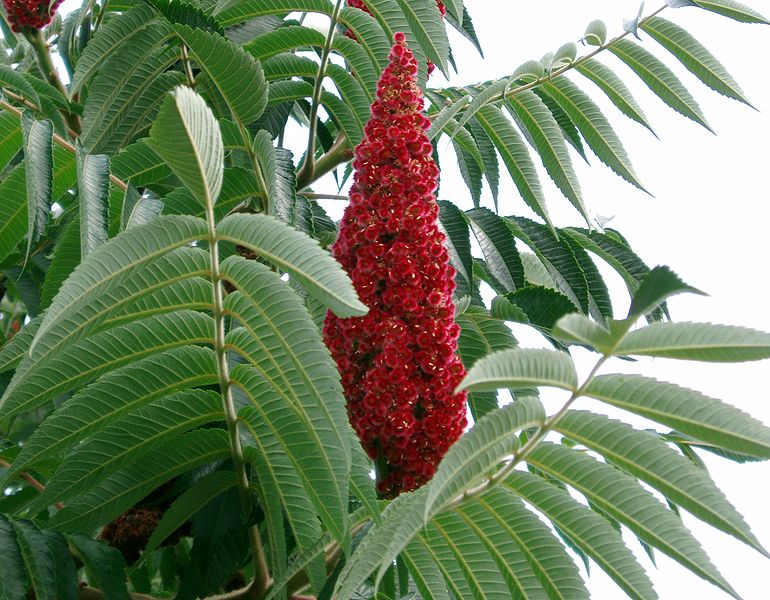
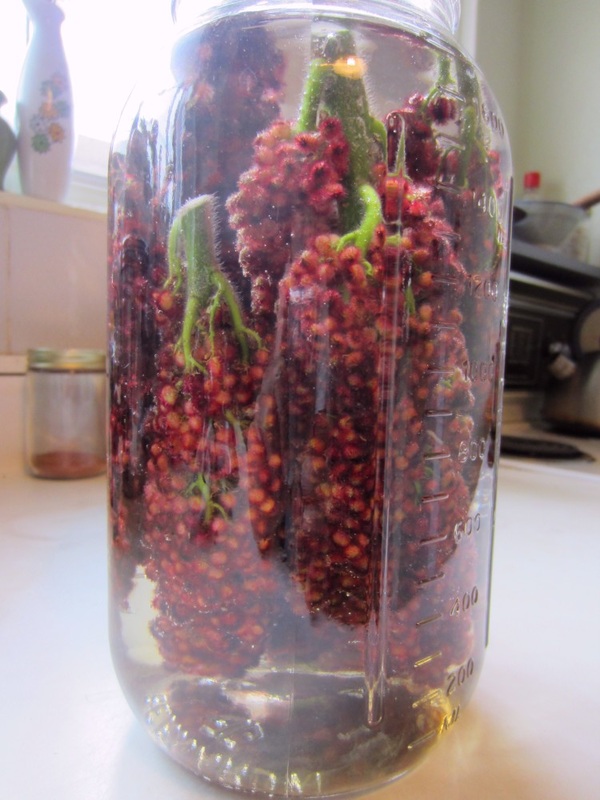
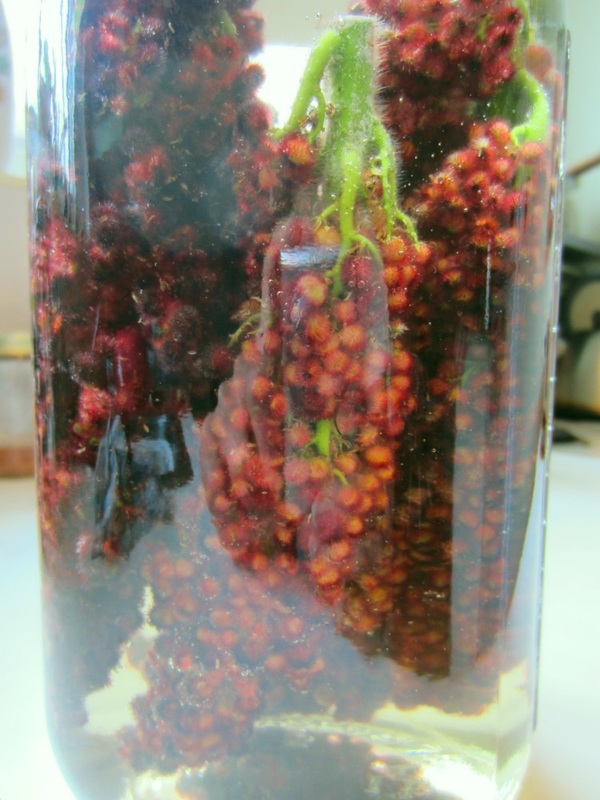

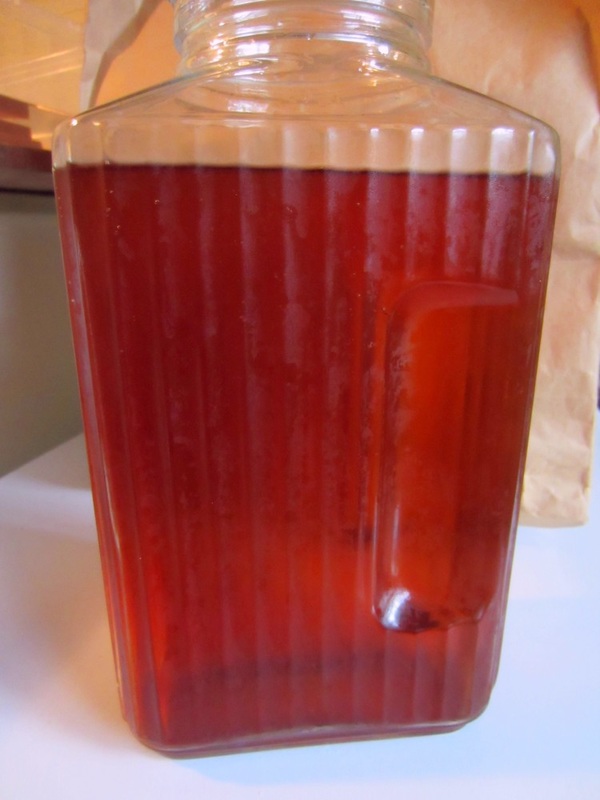
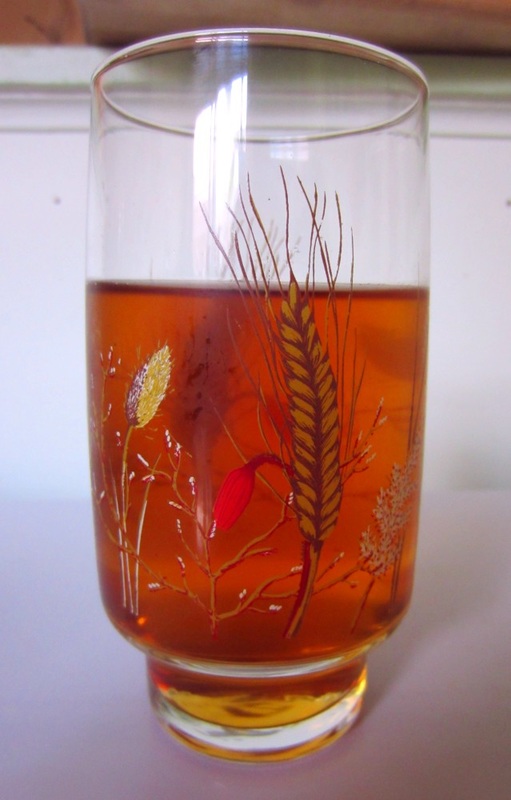
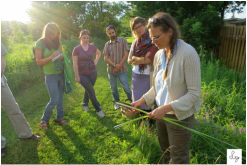
 RSS Feed
RSS Feed